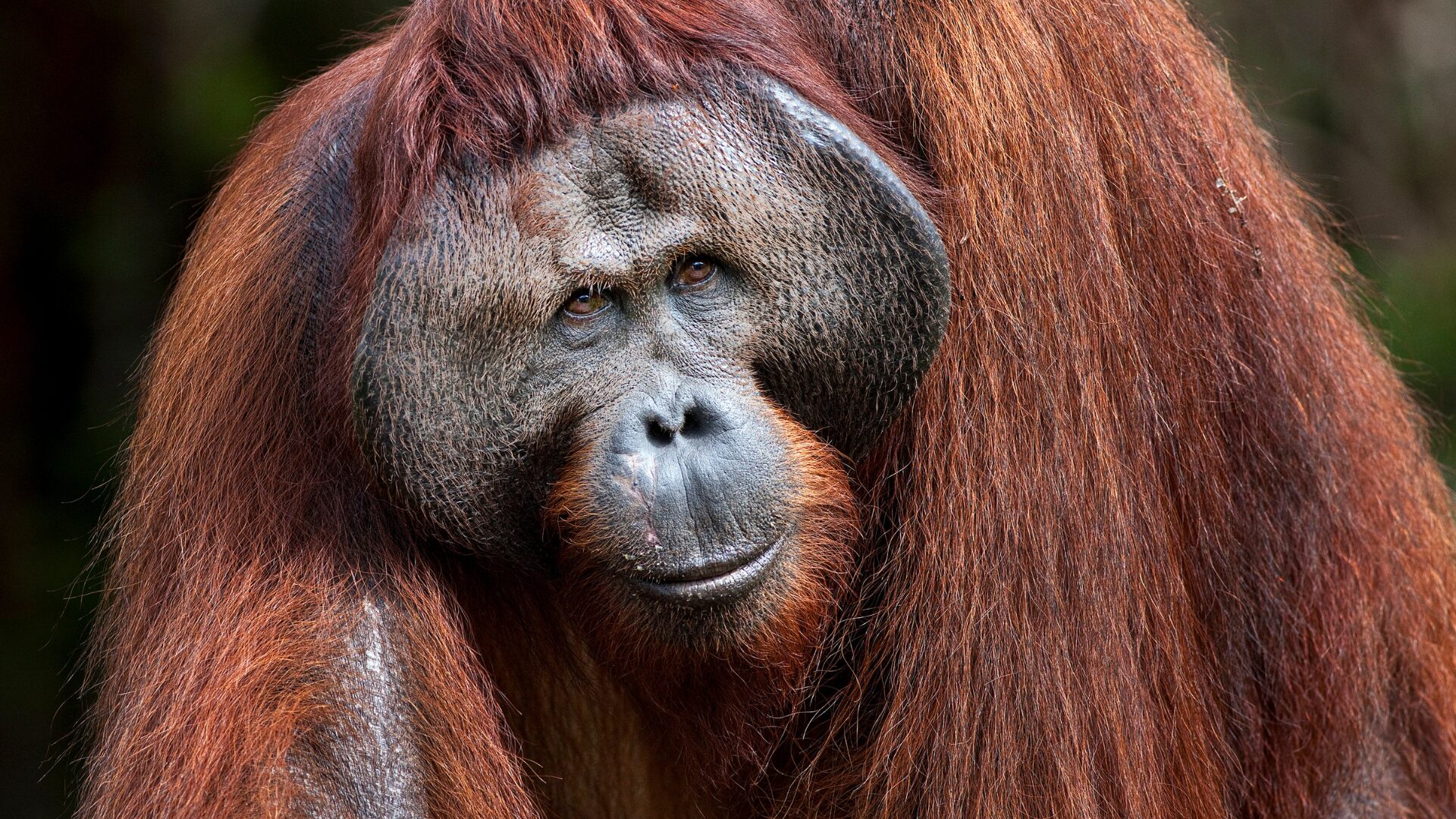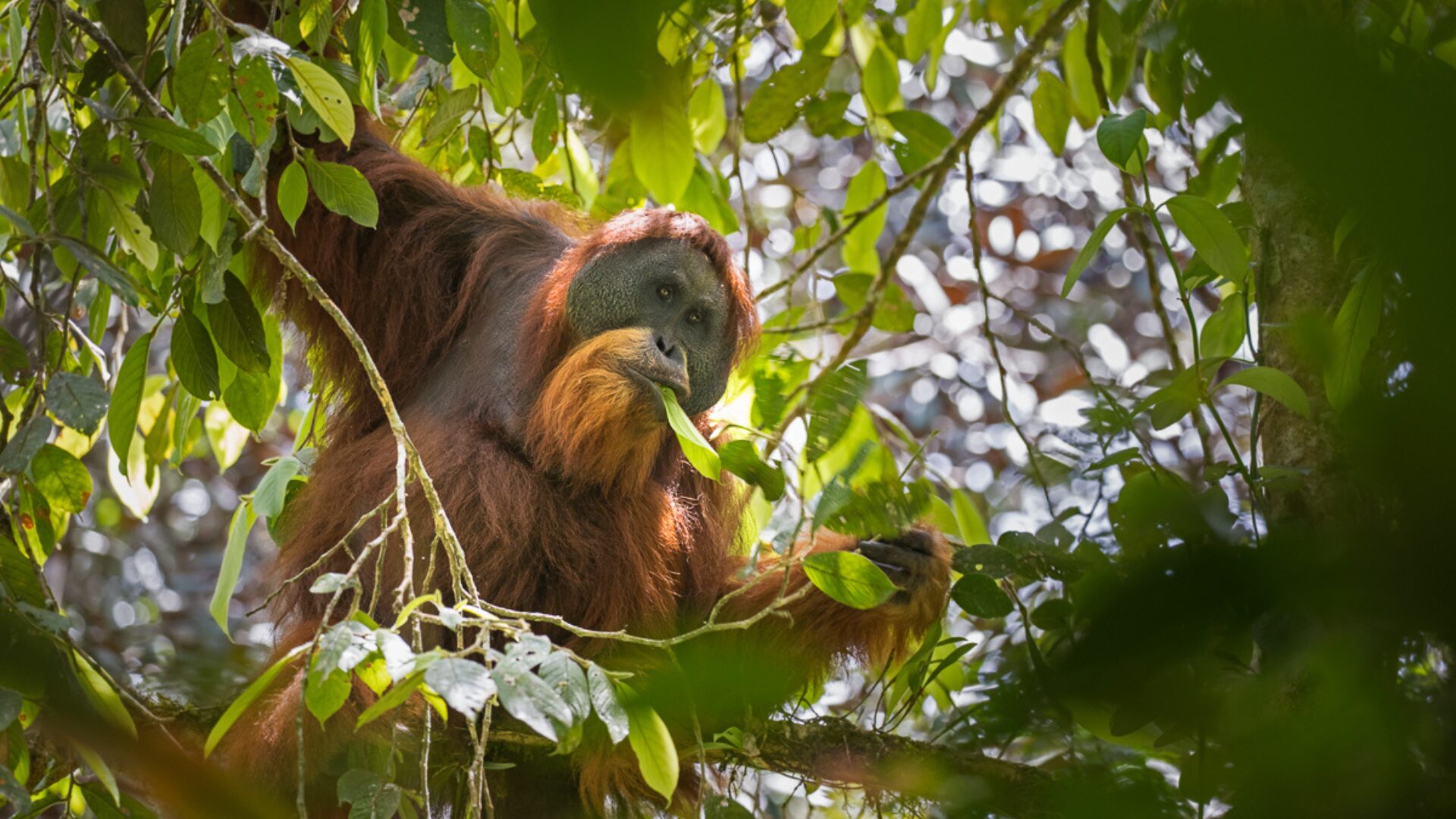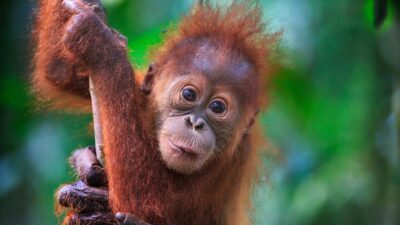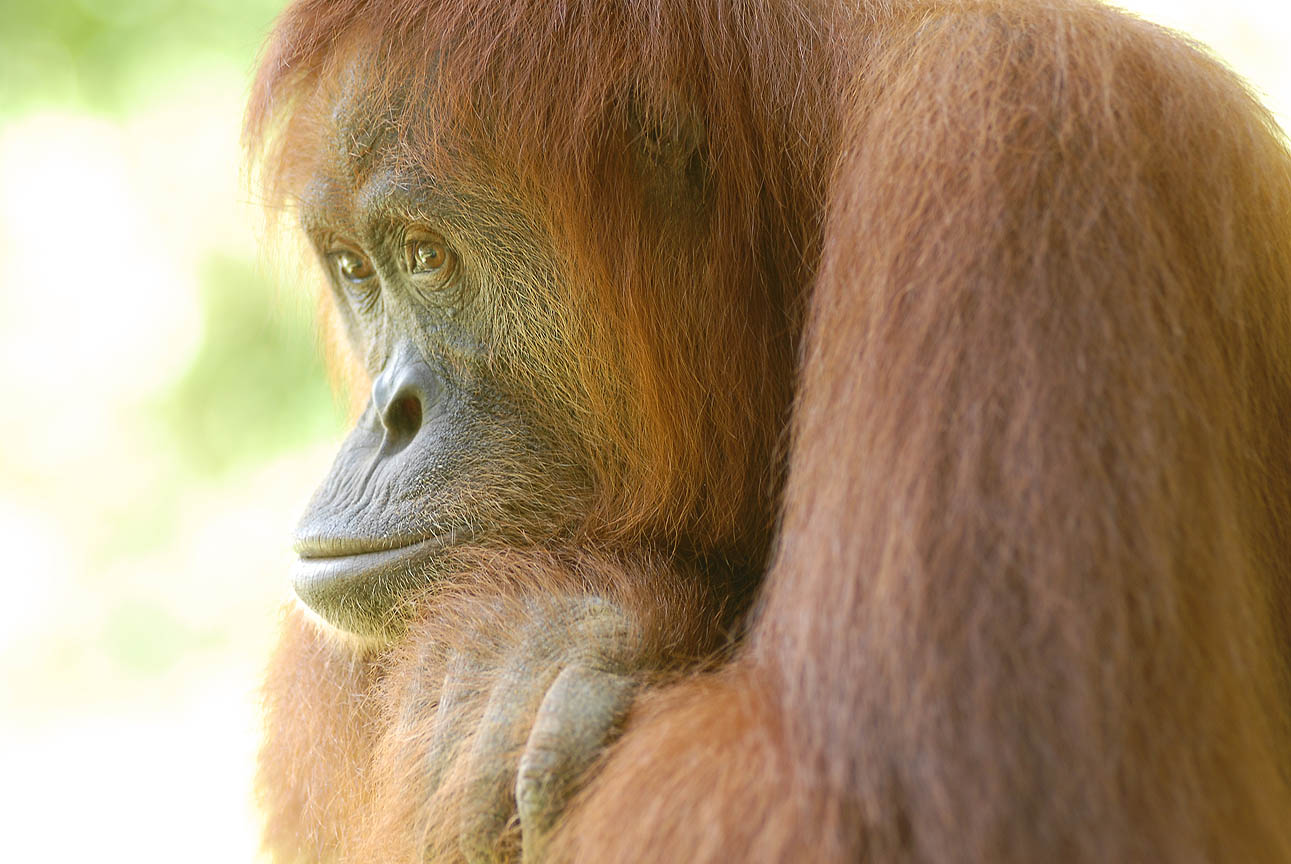But not all orangutans are the same. In the lush jungles of Sumatra and Borneo, three distinct species—Sumatran, Bornean, and Tapanuli—each carve out their existence, shaped by the landscapes they call home.
This is a guest blog from SOS Ambassador Zac Mills, The Wildlife Collective.

In the towering forests of northern Sumatra, the Sumatran orangutan (Pongo abelii) reigns supreme. These primates are slender, with long, reddish-orange hair that gleams in the dappled sunlight. Their delicate features and longer facial hair give them an almost regal appearance. While both Bornean and Sumatran orangutans have shaggy reddish hair, Sumatran orangutans are noted for their longer facial hair and are reported to have closer social bonds than their Bornean cousins.
Sumatran orangutans are the true aerial artists of the ape world, spending nearly their entire lives in the trees. Their long, gangly limbs allow them to swing effortlessly from branch to branch, rarely touching the ground. This arboreal lifestyle is partly due to the dense undergrowth and presence of predators like Sumatran tigers. Females are typically seen with a single, dependent offspring, forming the most consistent social unit observed in this otherwise solitary species.
Once far more numerous, the Sumatran orangutan is now Critically Endangered, with only about 14,000 individuals left in the wild.

Crossing over to the vast rainforests of Borneo, we encounter the Bornean orangutan (Pongo pygmaeus)—a species adapted to a harsher reality. These orangutans are more robust, with thicker, darker hair and a stockier build.
Bornean orangutans are more likely to descend from the trees to move around on the ground compared to their Sumatran relatives. This behavior is a response to Borneo’s drier climate and seasonal fruit shortages, requiring them to travel farther in search of food. Though less social than the Sumatran species, they are highly adaptable, capable of surviving in fragmented forests and even peat swamps.
Despite this adaptability, Bornean orangutans have also suffered sharp population declines. Today, they number around 104,700 individuals and are classified as Critically Endangered.

Deep in the remote Batang Toru forests of northern Sumatra, a third species remained hidden from science until 2017. The Tapanuli orangutan (Pongo tapanuliensis) is the rarest great ape on Earth, with fewer than 800 individuals left in the wild. They are smaller than their Sumatran relatives but share similar long, reddish hair. However, their skull structure and calls are unique, setting them apart as a distinct species.
Tapanuli orangutans face the greatest threat of all. Unlike their Sumatran and Bornean cousins, they are confined to a single forest block, making conservation efforts all the more urgent.

Despite their differences in appearance, behaviour, and habitat, all three species of orangutans face the same daunting challenge: survival. Habitat fragmentation, poaching, and climate change continue to threaten each species. A century ago, it’s estimated that more than 230,000 orangutans roamed the forests of Southeast Asia. Today, only around half remain—and their numbers continue to face threats. Yet as long as there are forests to shelter them and trees for them to swing through, there is still hope.
To see an orangutan in the wild is to witness the ancient spirit of the jungle. Each species tells a different story, but together, they remind us of the fragile beauty of our world and the responsibility we have to protect it.
 – Warmly, Zac Mills.
– Warmly, Zac Mills.
Sign up to receive 2-4 emails a month keeping you updated on the latest in orangutan and forest conservation as well as ways you can support this work. Cute orangutan pictures are also guaranteed! Join the thousands who have added their voice to the urgent call to protect orangutans and their rainforest home.
Subscribe Now
You can help protect Sumatra's Orangutans. Click to get updates

